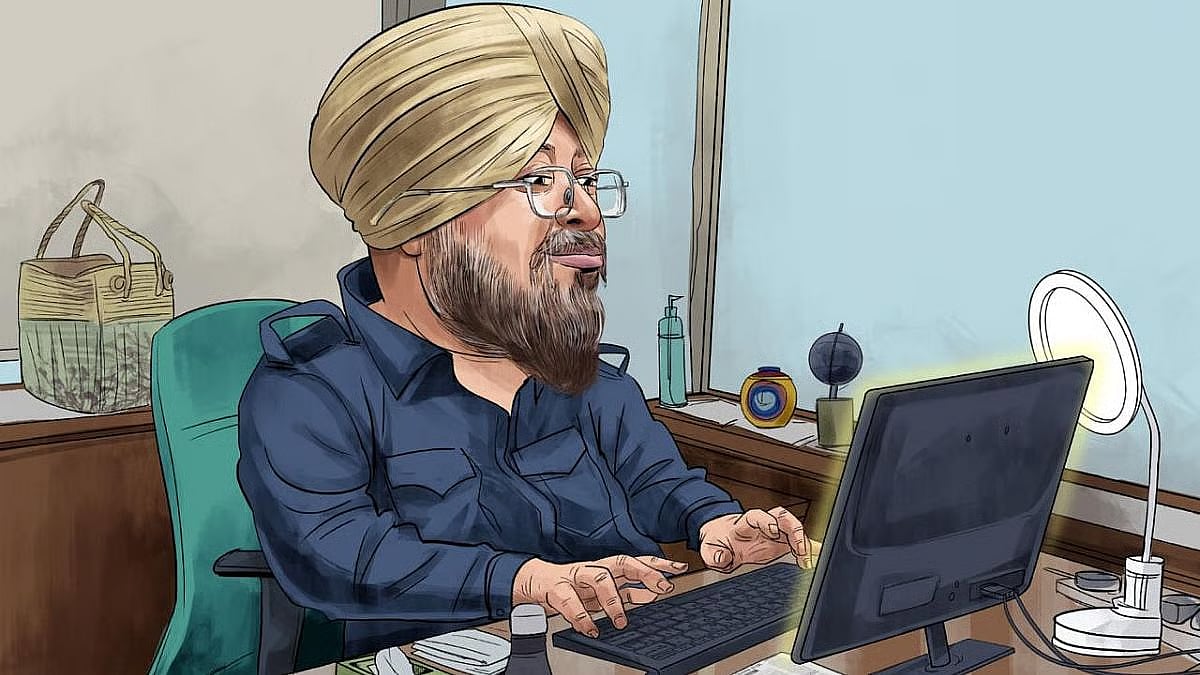Minister for Communications, Electronics & Information Technology Ravi Shankar Prasad has expressed satisfaction that the number of mobile phone manufacturers in India has increased from two, to 60 in the last five years. In parallel, Secretary Ajay Prakash Sahwney has said that 90 per cent of the mobile phones being sold in the country are being manufactured here. Further, we have had a stream of news reports saying that electronics majors have submitted proposals to invest large amounts in India. A similar announcement was made in 2015, that these companies would invest $17 billion. These are encouraging statements.
However, the electronics majors were already present in India in 2016, when 'Make in India' was launched. Foxconn and Lenovo had given contracts to local companies to manufacture their products in Sri City, Andhra Pradesh and Sriperumbudur, Tamil Nadu; and Samsung had its own manufacturing facility in Noida, Uttar Pradesh. The question is this: Why have they not expanded in the last five years? In particular, a production facility of Motorola, a subsidiary of Lenovo, has been lying closed in Chennai. Lenovo has not even restarted its existing plant, let alone make new investment. The 2015 announcement has clearly fallen flat.
A top chamber of commerce, Assocham, has said in a report that the mobile phones being “manufactured” in India are actually only last-line assembly, just as the homemaker brings flour, pulses and vegetables and cooks a last-line meal in the kitchen. This assembly work is not 'manufacture'. The objective of the Make in India and Atma Nirbhar Bharat schemes is to create self-dependence. These manufacturers continue to be dependent on the import of parts. This grim reality is seen in the electronics imports of $55 billion, against exports worth a mere $9 billion in 2018-19. We are nowhere near becoming 'atma nirbhar'. The truth is that there has been no progress since 2015.
This writer studied eight posts on the reasons for the slow progress of electronics manufacturing in India on the internet. Six of these complained about the unavailability of skilled workers. One explained that our colleges were asking the students to 'learn' the function of the 40 legs in an Intel chip—which they needed to memorise. Further, claimed the sharer of the post: “Even if the student were to become a repair technician, he wouldn’t be required to store the function of each of the parts of the dozens of varieties of chips in his mind. Instead, asking the student how he would use the integrated circuit to create a device would have been a hundredfold more stimulating, constructive, and productive.” Alas! The professors in our government colleges themselves do not know how to use the chips, nor do they have interest in learning it either because their salaries are secure as long as they churn out certificate-holding useless graduates.
Two posts complained about the cumbersome regulatory framework. A manufacturer from Bengaluru told this writer that the government had recently introduced a requirement that every export consignment would require a certificate from a chartered accountant. This process means additional paperwork and adds two extra days to delivery. The government is creating such new roadblocks at every step—the benefit, one may surmise, being the 'grease' money obtained by the officials. Other reasons mentioned in the posts were legal hurdles in implementation of contracts, the cost of capital, high rates of tax and the cost of land and electricity. I am not convinced of these reasons but there is no occasion to discuss them here.
The government has devised a scheme to provide 50 to 75 per cent capital subsidy for investments in new electronics manufacturing facilities. This is not going to work. It is like giving oxygen to a person dying of malnutrition. As said above, the main roadblocks are our education system and government regulations. Investments will not come unless we solve these problems. Just as they failed to, after the launch of Make in India in 2016. It must be remembered that our bureaucracy gets more opportunities to get grease money in disbursing these subsidies.
Perhaps the government is being driven by bad advice from the World Bank. The WB and other multilateral agencies like the United Nations are driven by the interests of the industrial countries. The governments of the countries, in turn, are driven by multinational corporations. These corporations have no interest in developing manufacturing in India. Their objective, on the contrary, is to kill Make in India, so that they can supply electronics goods from their plants in Vietnam and Taiwan, where there is greater availability of skilled labour and less extortion by the bureaucracy.Thus, in its recent World Development Report, the WB has advised the Government of India to reduce import duties.
Interestingly, the WB had itself said in the same report that the share of international trade in global manufactured goods had increased from 43 per cent in 2000 to 53 per cent in 2008 when the global financial crisis took place. It declined to 45 per cent in 2015 after the crisis. Now, it can only further contract after the corona pandemic. Therefore, the government should not run after foreign investors, as advised by the WB. Instead, the government must think it through - why would foreign capital come into India when our own high net worth individuals are leaving for better pastures?
The government should solve the basic problems of the economy, instead of giving capital subsidies. Professors in government colleges do not themselves have practical knowledge. Their salaries are secure. They do not want to teach. Further, private universities are unable to charge adequate fees to employ competent teachers, given the low cost of education in a government college. There is a need to free government colleges of decrepit professors.
Secondly, the government must reduce the extortion by the bureaucracy. Thirdly, the government will have to reduce the social divisions and have a constructive dialogue with the opposition and improve the environment—water and air in particular. Investments--foreign- or domestic—will take place when we provide pleasant living conditions. The present hype about the proposals of foreign investments will certainly prove a pipe dream.
The writer is a former professor of economics, IIM Bengaluru









